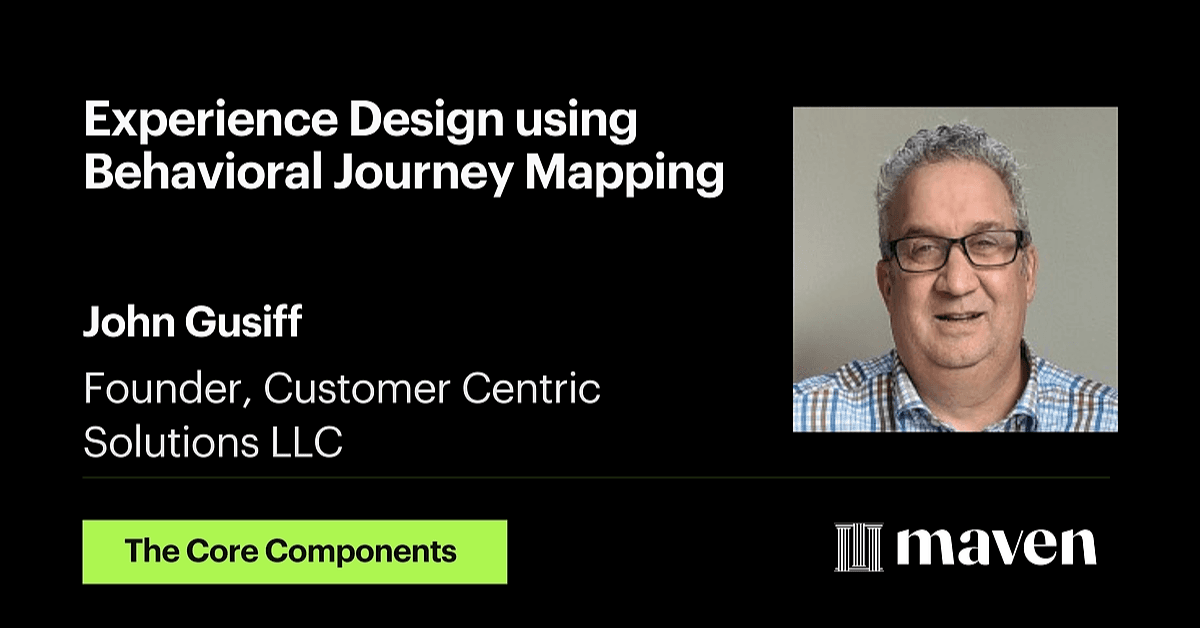Experience Design using Behavioral Journey Mapping
Hosted by John Gusiff
In this video
What you'll learn
Introduction to the Make it Toolkit for Behavioral Design
Overview of the Five Laws of Behavior
Behavioral Journey Map vs. Traditional Journey Map
Core Components of a Behavioral Journey Map
Why this topic matters
You'll learn from
John Gusiff
Managing Partner at Customer Centric Solutions LLC
I am dedicated to enhancing customer experiences through human-centered design and design thinking methodologies.
By combining customer jobs-to-be-done research with the design sprint process and the principles of applied behavioral science, I work with my clients to create easier, more effective, and enjoyable customer experiences. That help people make progress in their lives (accomplish their jobs-to-be-done).
My clients have included American Honda, Canada Goose, Citibank, ecobee, G Adventures, Gympass, Humana, Porch, lululemon, Royal Ambulance, Shaklee, and TransAlta.
Go deeper with a course


Keep exploring






